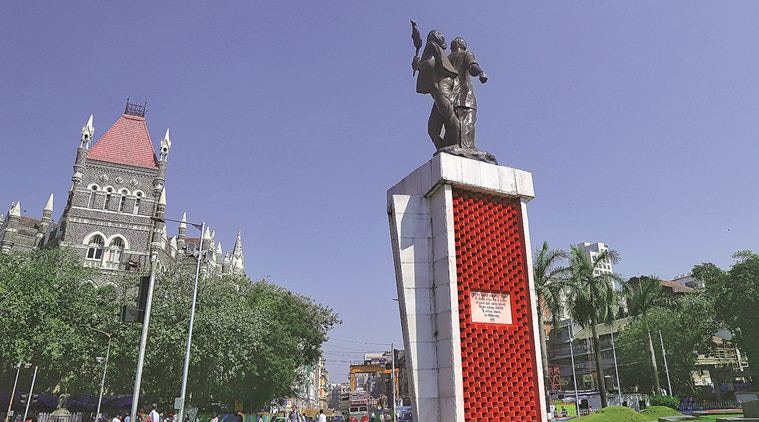 Relic from the past: Hutatma Chowk or Martyrs’ Square in Mumbai. (Source; Nirmal Harindran)
Relic from the past: Hutatma Chowk or Martyrs’ Square in Mumbai. (Source; Nirmal Harindran)
Relic from the past: Hutatma Chowk or Martyrs’ Square in Mumbai. (Source; Nirmal Harindran)
The protests over the controversial Citizenship (Amendment) Act across the country have seen the police open fire, allegedly even at peaceful protestors. Sixty-five years ago, Mumbai witnessed deadly police firings at peaceful demonstrations. Today, Hutatma Chowk or Martyrs’ Square, an important landmark located in the Fort area of Mumbai, stands as a reminder of the horrific incidents.
Earlier in January, a call by the Joint Action Committee for Social Justice asking anti-CAA protesters to gather at Hutatma Chowk, was turned into a peaceful protest march to the Gateway of India. In spite of the memorial, the square is not designated as an official space for mass protests. The police filed FIRs against three protesters, bringing back memories of the policing of protests.
The memorial commemorates the 107 people killed in two instances of police firings during the Samyukta Maharashtra movement, which demanded the creation of the state of Maharashtra, in 1955 and 1956. Samyukta Maharashtra Samiti members Pralhad Keshav Atre and Shripad Amrit Dange selected sculptor Harish Talim to
create a memorial to remember the hutatma (martyrs), says art historian Sandeep Dahisarkar.
The bronze memorial depicts two martyrs — an urban labourer and a farmer — holding a torch together. Raised on a pedestal, the memorial is 16 feet high and was completed in 1963 at the cost of Rs 45,000, says Dahisarkar. He adds, “The memorial is different from the others in south Mumbai as it is not dedicated to a single personality.”
Talim’s studio is run by his grandsons on Grant Road today and he is also credited with making a tall statue of Mahatma Gandhi at Mantralya. For the Hutatma memorial, he chose to evoke the aesthetics and figures of Soviet social realism. Common workers were elevated to colossal icons, and they seemed to march ahead to a better future.
The Hutatma Chowk bears remarkable similarities with several social realist sculptures, such as Worker and Kolkhoz Woman (1937) by Soviet sculptor and painter Vera Mukhina in Moscow. Mukhina made a worker and a kolkhoz (collective farm) woman holding up a hammer and sickle, which together formed the labour symbol. The Hutatma Chowk memorial’s resemblance to these figures is explained by the fact that the Samyukta Maharashtra protest was being led by anti-Congress parties, socialists, communists and trade unions. Bombay was set to be made into a Union Territory or the capital of a bilingual Marathi-Gujarati state by then PM Jawaharlal Nehru. The protests and deaths ultimately helped Bombay become the capital of the new state of Maharashtra on May 1, 1960. Since then, May 1 is observed as both Labour Day and Maharashtra Day in the state.
In his blog, historian Shekhar Krishnan writes, “Like with the Shivaji statue opposite the Gateway of India, the statue at Hutatma Chowk was intentionally placed to ruin the view of a famous colonial landmark, and reorient the symbolic geography of the city.”
Historian Aravind Ganachari, former head of the department of history at the University of Mumbai, says that the farmer in the memorial is an important reminder of the then second-largest party in Maharashtra after the Congress. The Shetkari Kamgar Paksh (The Peasants and Workers Party of India) was keen that in the labour movement, farmers shouldn’t be sidelined.
The Hutatma memorial is put to shade by its more elegant neighbour, Flora Fountain, and has been perceived as a sore thumb sticking out among all the colonial architecture around it. In its ruggedness, however, is a timely reminder that the spirit of the protestor lives on.